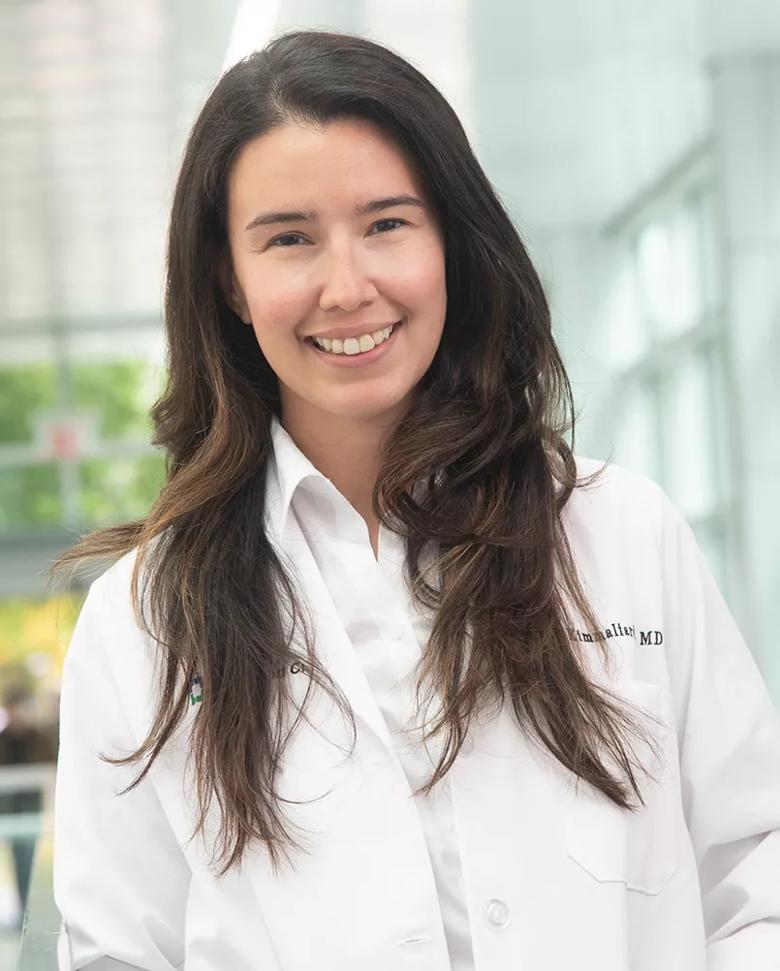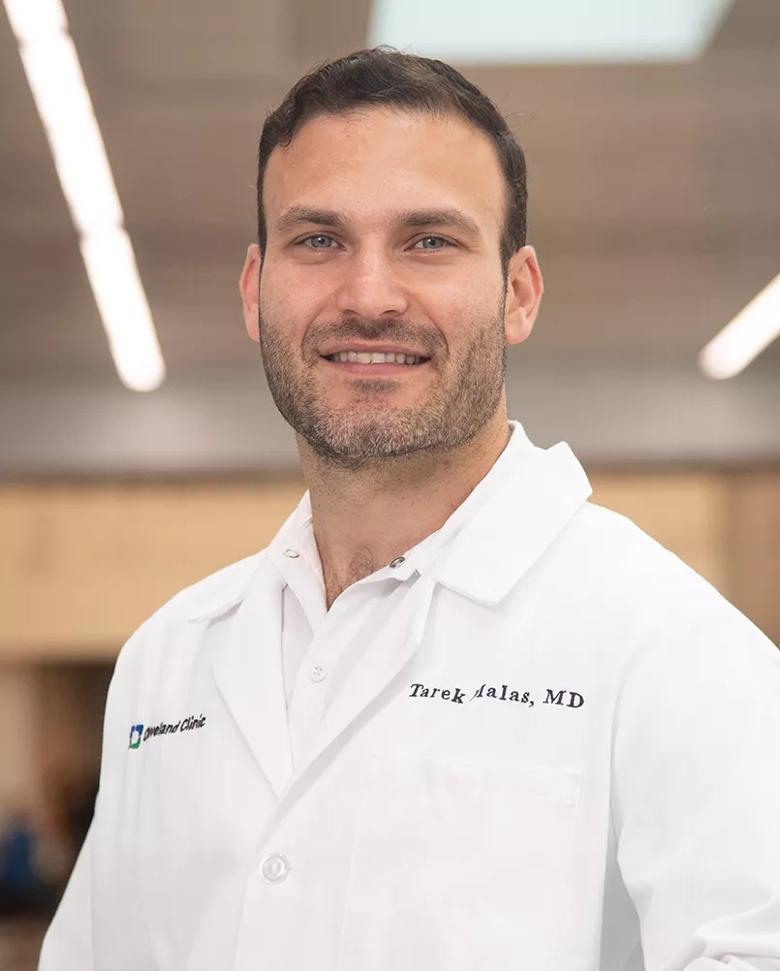Four recent hires add bench strength and diversity to meet complex patient needs
Cleveland Clinic’s Department of Thoracic and Cardiovascular Surgery has long been one of the largest in the nation, but it recently surpassed a growth marker never before achieved in its distinguished history: the hiring of four new staff surgeons within a 12-month period.
Advertisement
Cleveland Clinic is a non-profit academic medical center. Advertising on our site helps support our mission. We do not endorse non-Cleveland Clinic products or services. Policy
The new surgeons — who are individually profiled below — have given the department an unprecedented degree of diversity while also enhancing its bench strength. “We have been busier than ever before and are performing more complex operations,” says A. Marc Gillinov, MD, who chairs the department. “We therefore needed to grow and expand our expertise, and we have very intentionally brought in surgeons who can do all types of cardiothoracic operations while also bringing specialized skill sets to specifically address targeted areas of patient need.”
He adds that the staff additions align with a principle that’s guided the department since it was chaired by Floyd (Fred) Loop, MD, and Delos (Toby) Cosgrove, MD, from the mid-1970s to the mid-2000s: Find and hire the best people you can for each position. “Why did we hire all four at this time?” he says. “Because they were the best people in the country, if not the world, for their positions.”
It also helped that all four new surgeons spent at least a year of their training at Cleveland Clinic, which helped ensure that they fit well with the culture of the department, which now includes 22 surgeons on Cleveland Clinic’s main campus.
The hires are also part of a growth strategy for the department to make sure that all key areas of specialty interest have an appropriate age distribution of surgeons. “If you look at our array of surgeons in each area — aortic surgery, robotic surgery, reoperative surgery, heart failure and others — we have surgeons in the first third of their career, surgeons in the middle third of their career and surgeons in the last third of their career,” Dr. Gillinov explains. “This ensures a continuity of expertise that gets passed from one generation to the next.”
Advertisement
The result, he adds, is an opportunity to bring more expertise to bear for patients, especially those requiring very complicated operations or minimally invasive operations. “We increasingly face complex problems that require our surgeons to work together, which demands a large enough cadre of surgeons to take care of the patients,” Dr. Gillinov concludes.

Specialty interests: Off-pump CABG; multi-arterial and total arterial bypass grafting; single-vessel small thoracotomy bypass grafting (MIDCAB)
A bit about her training: “I completed a fellowship in advanced cardiac surgery at Cleveland Clinic, which gave me exposure to a breadth of cardiac operations, including high-risk cases and very sick patients.”
Research interests: “I continue to be curious about coronary arteries and revascularization, and I would love to understand better how we can optimize conduit selection for targets, such as through consideration of the functional severity of blockages. I also plan to continue doing research looking at cardiovascular health and outcomes of minority populations — namely, women and Indigenous and Black populations.”
What’s something that excites you about practice today? “The opportunity to address the historical underrepresentation of women in cardiovascular research and the underdiagnosis and undertreatment of heart disease in women. As a female cardiac surgeon, I feel a responsibility to help improve outcomes for women undergoing cardiac surgery. We also know that having a diverse and representative group of health professionals improves patients’ access to care, perceptions of care, and care outcomes. As an Inuit woman, I think it’s important for women wanting to pursue medicine to see themselves reflected in these positions and know that it’s possible to be a female cardiac surgeon.”
Advertisement

Specialty interests: Aortic aneurysms, dissections and stenosis; connective tissue disorders; heart valve disease
A bit about her training: “During my integrated cardiothoracic surgery training at Emory University, I also obtained an MS in clinical research as part of an NIH TL1 postdoctoral research training award. I then completed an aortic surgery fellowship at Cleveland Clinic before starting as staff.”
Research interests: “I’m interested in open and endovascular aortic surgery as well as valvular surgery outcomes, at both an institutional database level and a national trial level. I also plan to help integrate advanced imaging modalities, such as 4D MRI, into our growing database of aortic tissue histology and biomechanics to better understand the risk of aortic catastrophes and optimize surgical outcomes in this complicated patient population.”
What’s something that excites you about practice today? “Opportunities for mentorship, which is what led me to cardiac surgery. I’ve been lucky to have amazing mentors throughout my training, and I am passionate about passing on the wisdom and experience I have gained from them. I have tremendous interest in mentoring anyone who is considering the field of cardiothoracic surgery, but particularly women and minorities who traditionally may not have had many mentors who looked like them. Mentorship is critical to the growth and success of our specialty.”

Specialty interests: Minimally invasive surgery; robotic surgery; percutaneous structural interventions; complex valvular disease; CABG; atrial fibrillation surgery
Advertisement
A bit about his training: “I have been fortunate to train at some of the largest and best centers in North America for minimally invasive and complex disease, including training in robotic and minimally invasive cardiac surgery under Dr. Marc Gillinov here at Cleveland Clinic.”
Research interests: “A background in both engineering and medicine has given me an excellent basis for innovative research. I have particular interest in mitral and aortic valve disease, with an emphasis on minimally invasive approaches. I also enjoy research on tackling challenges to our healthcare system at a population level, which stems from my background in public health.”
What’s something that excites you about practice today? “One of the most exciting developments in cardiac surgery is the collaboration between cardiac surgery and cardiology to perform procedures using a minimally invasive or hybrid approach. This can significantly improve recovery times and help patients return to their daily lives more quickly with the same overall excellent outcomes that are achievable with a more invasive open-heart surgery.”

Specialty interests: Heart transplantation; ventricular assist devices; arterial coronary revascularization; pericardiectomy; aortic surgery
A bit about his training: “I was fortunate to complete my cardiothoracic residency training at Cleveland Clinic with advanced training in heart and lung transplantation and mechanical circulatory support, including ventricular assist devices.”
Research interests: “My research interests are focused on optimizing surgical management of advanced heart failure, whether with heart transplantation or mechanical support. I’m also interested in the ways mechanical support can be used to assist conventional cardiac surgery and prevent cardiovascular deterioration in high-risk patients.”
Advertisement
What’s something that excites you about practice today? “Modern cardiac surgery is less than a century old, yet it’s constantly evolving and innovating, especially in the past decade. It is an exhilarating time to practice heart surgery at Cleveland Clinic and to be able to offer patients and their families the full breadth of cardiovascular care in a less invasive and more reliable manner.”
Advertisement

A scannable graphic recap of our latest data

Volume-based experience and judicious patient selection are central to success

Custom STS risk model improves ability to predict 30-day survival for a growing population

Study offers guidance on an increasingly common presentation

New review distills insights and best practices from a high-volume center

Tailored valve interventions prove effective for LVOTO without significant septal hypertrophy

30-year study of Cleveland Clinic experience shows clear improvement from year 2000 onward

Launch of the tool promises to reshape quality assessment across the specialty